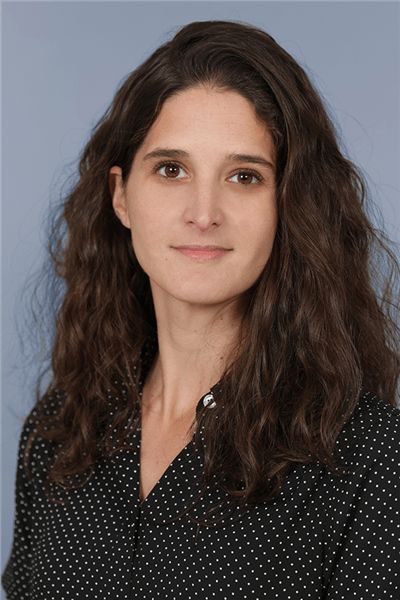
Sabrina Absalon, PhD
Assistant Professor of Biochemistry, Molecular Biology & Pharmacology
Assistant Professor of Microbiology & Immunology
- sabsalon@iu.edu
- Phone
- 317-274-7806
- Address
-
Department of Pharmacology and Toxicology
635 Barnhill Drive MS A422
Indianapolis, IN 46202 - PubMed:
-

Bio
Dr. Sabrina Absalon received her B.S. in Biochemistry and Ph.D. in cellular and molecular biology from the University Pierre and Marie Curie in Paris, France. Her graduate work in Dr. Philippe Bastin's Lab at Pasteur Institute Paris focused on studying flagellum assembly and function in the protozoan parasite Trypanosoma brucei. She then moved to Boston for her first postdoctoral training in Dr. Anna Krichevsky's Lab at the Harvard Institute of Medicine to determine the contribution of microRNAs to Alzheimer's disease progression.
In 2011, she went back to parasitology and joined a research group led by Dr. Jeffrey Dvorin at Boston Children's Hospital, where she studied the molecular pathogenesis of malaria infection. She joined the Department of Pharmacology and Toxicology at the Indiana University School of Medicine in October 2019, where she is currently an Assistant professor.
Key Publications
Complete List of Published Work in My Bibliography:
https://www.ncbi.nlm.nih.gov/myncbi/1FaFeeJktteEy3/bibliography/public/
| Year | Degree | Institution |
|---|---|---|
| 2007 | PhD | Pierre and Marie Curie University |
| 2003 | M.Sc. | Pierre and Marie Curie University |
| 2001 | BS | Pierre and Marie Curie University |
Coupling nuclear division cycles with cell growth:
During the asexual stage of the life cycle, Plasmodium falciparum replicates via schizogony, a division mode that can be divided into a growth phase and a budding phase.
During the growth phase, the parasite undergoes multiple asynchronous rounds of mitosis with segregation of uncondensed chromosomes followed by nuclear division with an intact nuclear envelope. The budding phase occurs when the multi-nucleated syncytium is subjected to an asynchronous round of karyokinesis, coinciding with the segmentation of dozens of daughter cells known as merozoites.
-
How does each nucleus cycle independently?
-
How do nuclei maintain independent cell cycle stages within a common cytoplasm?
-
What evolutionary advantage does asynchronous mitosis bring to Plasmodium spp asexual replication?
The molecular replicative machinery utilized by the Plasmodium parasite, as well as whether the parasite uses local and global checkpoints to control the timing of DNA replication and nuclear division, remain a major gap of knowledge in the biology of the parasite.
Nuclear envelope formation & shaping:
The eukaryotic genome is housed by a double lipid bilayer called the nuclear envelope (NE). During schizogony, the NE remains intact before chromosome segregation. This form of division is termed closed mitosis, and it is considered to be the most ancient mechanism of eukaryotic cell division. Plasmodium falciparum begins mitosis with an intact NE and assembles an intranuclear mitotic spindle. The formation of mitotic spindles causes the most dramatic rearrangements of nuclear shape when the spherical nucleus adopts an elongated dumbbell shape.
?To understand the dynamics of the NE during closed mitosis, our laboratory studies multiple inducible knockdown parasite lines with a defect in NE, including one mutant with the loss of its NE during replication (see figure). Also, we are mapping the proteome of the outer and inner nuclear membrane utilizing the method of proximal-dependent labeling of proteins.
?An understanding of the molecular mechanism of cell division in malaria parasites could reveal vulnerable targets for antimalarials. Also, a mutation in NE proteins results in a broad spectrum of human diseases, including cancer, therefore studying the divergent mitotic mechanism of Plasmodium spp might provide new insights on common properties of NE biology.?